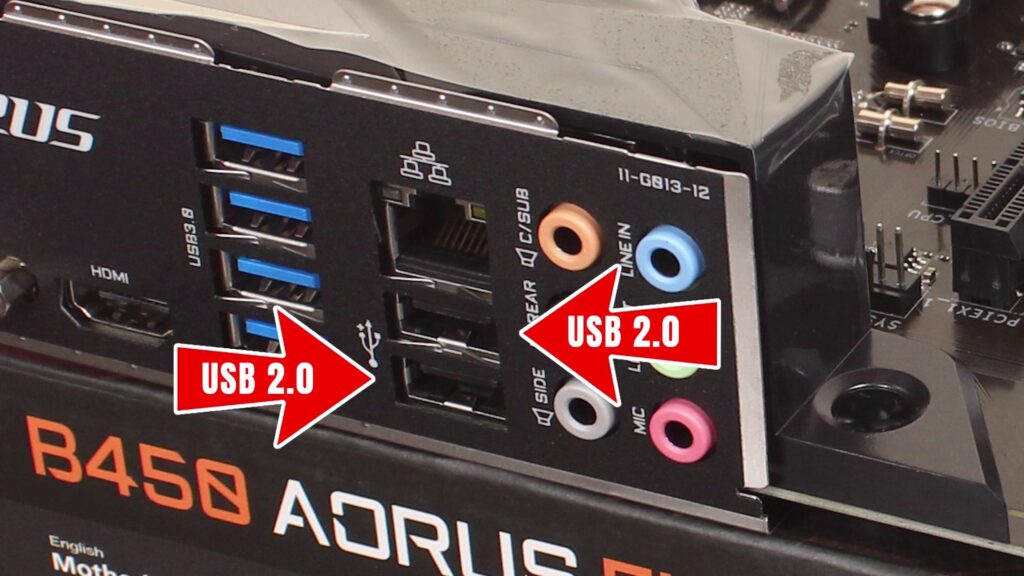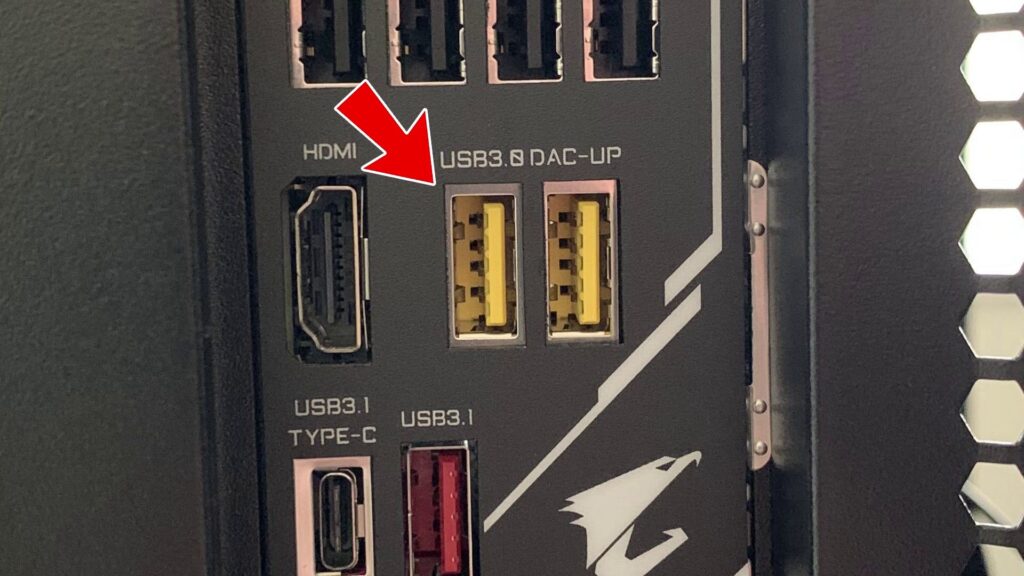USB, who doesn’t hear about it? But it has a few very confusing aspects. Apart from the different plug types like Mini USB, Micro USB, USB C, USB B, etc, there’s another very confusing and not standardized exposure which is color coding. Color coding is especially in trend with USB Type-A ports to indicate the different capabilities of the ports. So, without further ado let’s dive deep and uncover the truth of what these colors actually tell us.
Black USB Port
Black USB ports can be seen everywhere. From our computers to smartphone chargers. If there are any USB ports it mostly would be black in color. Black Color USB ports generally represent USB 2.0 Specifications. With a data transfer speed of up to 480 Mbps around 60MB/s and a power delivery capability of 2.5W. This port is obviously suitable for almost every device that doesn’t care about data transfer speed. Such as a Keyboard, mouse, Microphone, Webcam, etc.

However not every black USB ports are USB 2.0 port. As I have mentioned there’s no standard for colors in USB ports so it’s possible that a USB 3.0 port would be black in color. I have seen something on my laptop – Dell Inspiron 15 7577. All the USB ports support USB 3.0 but they are all black in color.
Blue USB Port Means
Blue USB ports generally indicate USB 3.0 specifications. USB 3.0 is also known as USB 3.1 Gen 1. With a maximum speed of 5Gb/s and 4.5W of power delivery capability. Which is more than 10 times faster than USB 2.0. Obviously, all the USB versions are backward compatible so no words for that but what needs to be said is, USB 3.0 ports are designed to keep data transfer in mind. So, don’t waste that port of your machine by just connecting simple devices like a keyboard, mouse, or something similar who doesn’t care about the transfer speed.

Red USB Ports Means
Red USB ports are generally designed to represent USB 3.1 also known as USB 3.1 Gen 2. It has a maximum speed of 10Gb/s equivalent to 1280MB/s. Red ports are mostly ‘Always on Ports’ which means even in sleep mode those ports are capable of delivering power through them. That would be nice to charge or power some USB devices. This type of port can sometimes be orange instead of red.

N.B. After the release of USB 3.2 which is only limited to USB C Ports. All the revisions from USB 3.0 are renamed and this time USB 3.0 is now known as USB 3.2 Gen 1 and USB 3.1 is now known as USB 3.2 Gen 2.
Yellow USB Ports Means
Yellow USB ports don’t mean anything. It could be a USB 2.0, USB 3.0, or USB 3.1 port. Actually, when a USB port is leveled yellow mostly, it is a special port sometimes with some unique ability – that could be anything. Sometimes a yellow port is just designed for power delivery there are no USB data lines on that port. It could deliver up to 10W. It is completely upon the manufacturer what they want to set for a yellow USB port.

Green USB Ports Means
Green USB ports are generally not seen in computers or laptops. It is quite common on chargers.

Color Doesn’t Say Anything
As I have mentioned before, the color of the USB ports isn’t standardized but the few colors I have mentioned before are most used for those purposes. But to identify what an ISB port is really capable of there are signs near it. Which represents its capabilities.

This sign represents the port is USB 2.0.

Both signs indicate USB 3.0.

It indicates USB 3.1.

This shows USB 3.2.
In addition to these signs if there is a plug or battery or something similar printed near the USB port; that means that port can also be used for power delivery. If there’s no USB sign but there’s a power logo then that port only supports power delivery. Other than these if a port is capable of something different it will be mentioned near it.

A USB 3.0 Port With Power Delivery Capability
What Do You Think?
So, that’s all. What do you think? Would you think that there should be a standard for color coding? Or it should keep going as it is. Although with the introduction of USB-C, USB-A will fade away soon enough. USB-C is really great. Already lots of different devices adapt it. Soon it will be everywhere. Then we don’t need color codes to evaluate different features. We have an in-depth article on USB C take a look at them. So, that being said, hope you guys have enjoyed this article and learned a few things or two if so then don’t hesitate to appreciate it. Thanks for visiting.
